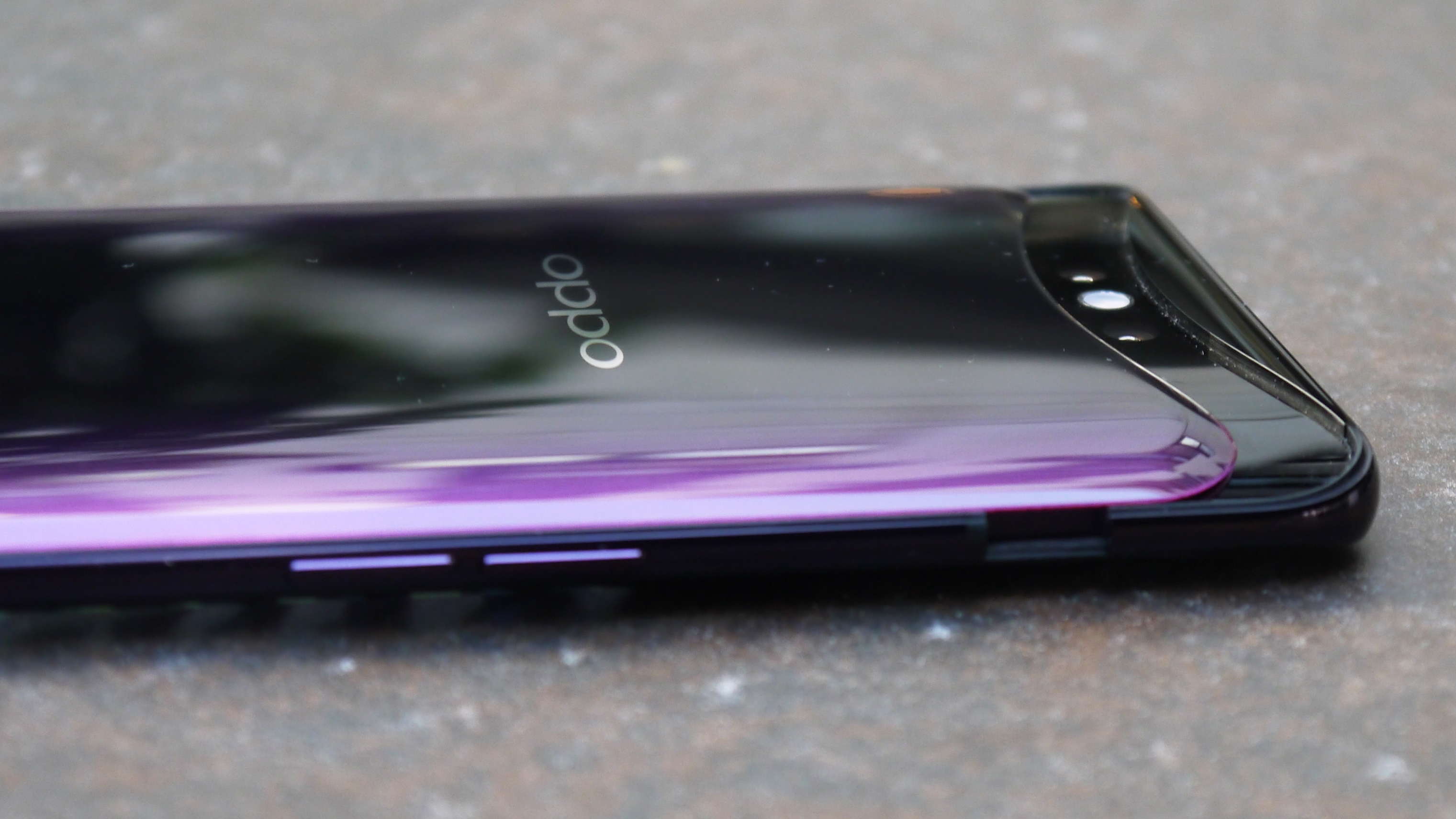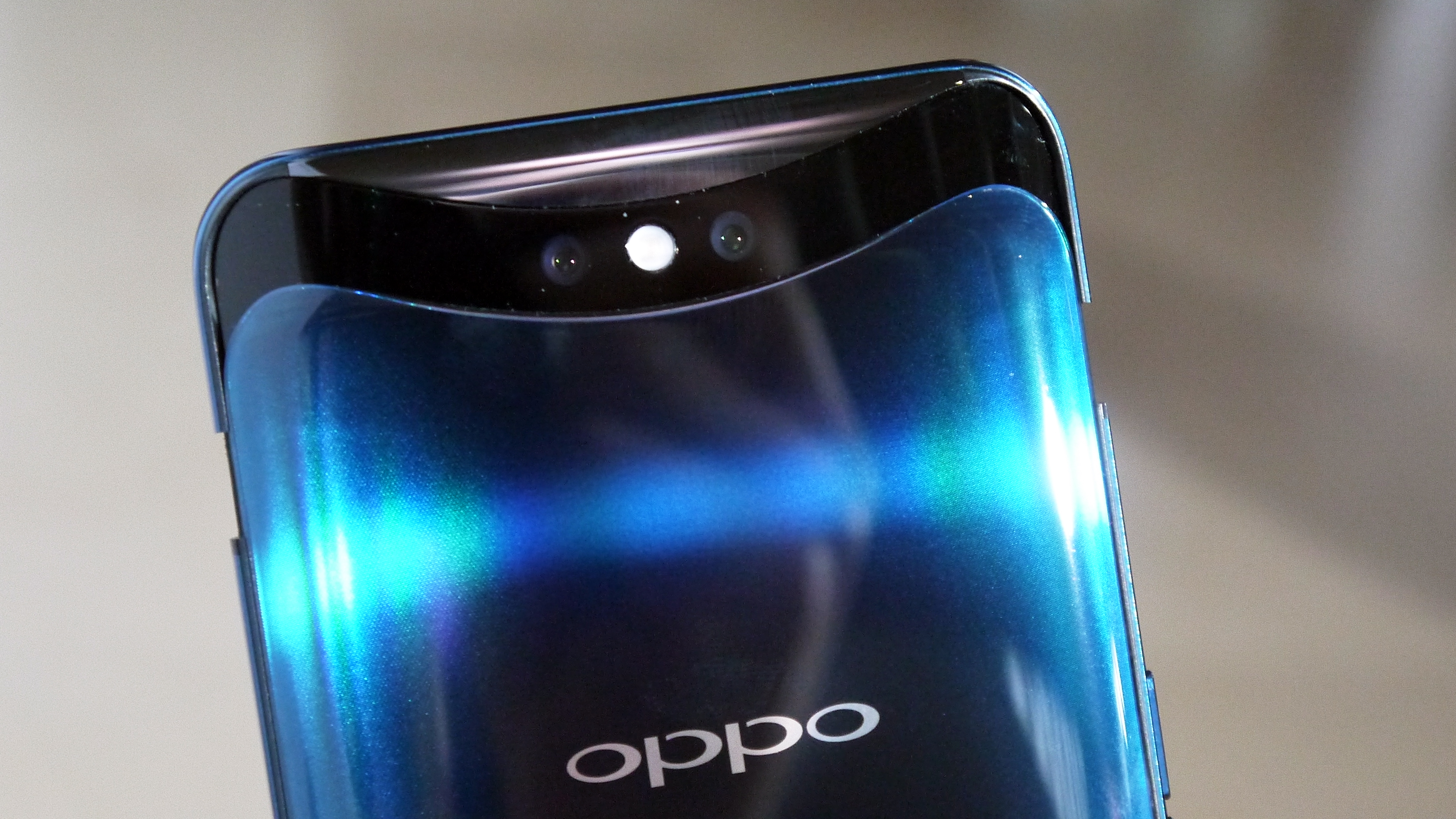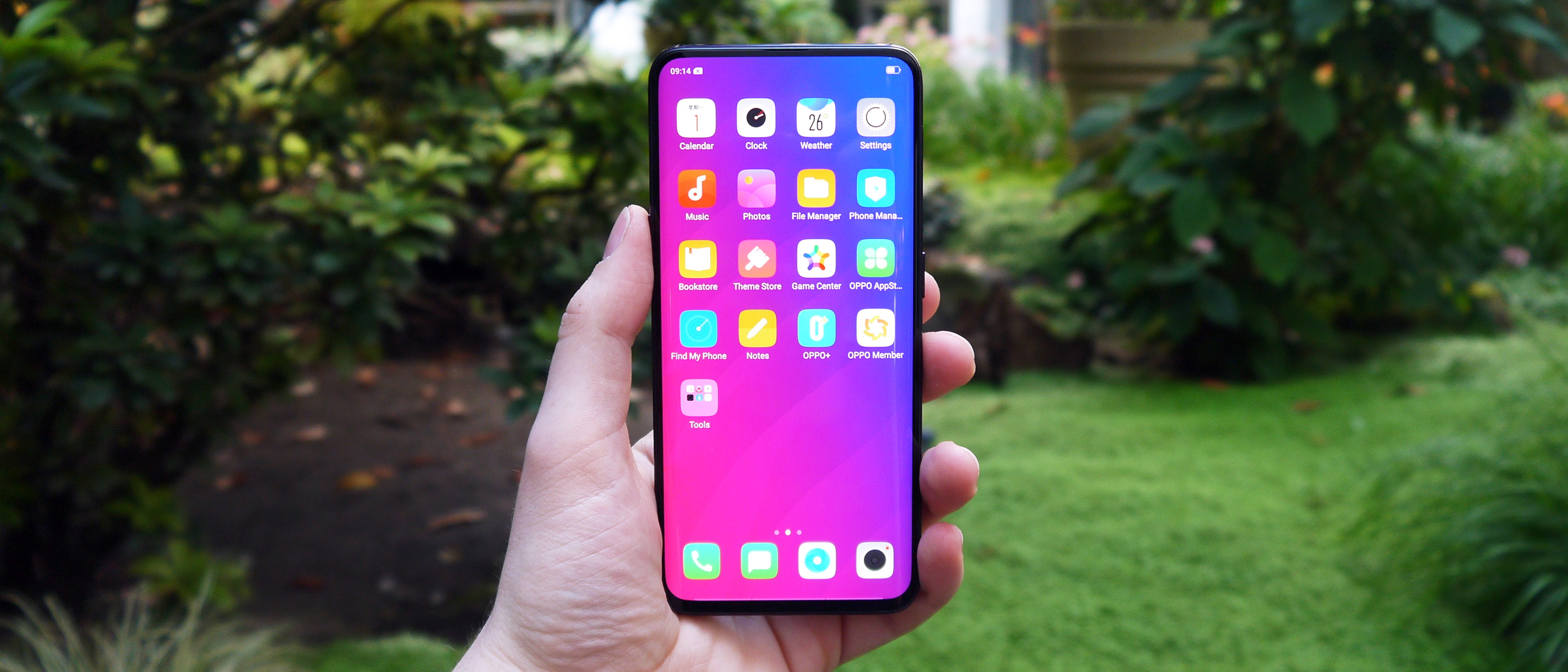TechRadar Verdict
The Oppo Find X is a beautiful handset with innovative features, powerful performance and a futuristic design, but its star gimmick ultimately detracts from an otherwise top-notch (yet notch-free) flagship experience.
Pros
- +
Fantastically sleek, no-bezel design
- +
Plenty of power
- +
Novel pop-up concept
Cons
- -
No waterproofing
- -
No NFC, microSD, or headphone jack
- -
No fingerprint scanner
- -
Mechanism feels like it won't last
Why you can trust TechRadar
Update: The Oppo Find X price has dropped one again in the UK, and you can now pick it up for only £749, down from £799, which was already a reduced price. That's a great price for a phone that's still got one of the most impressive displays and mechanical tricks on the market.
Chinese handset-maker Oppo has a habit of aping either Samsung or Apple when it comes to its phones hardware and software design, so the new Oppo Find X is something of a welcome surprise, offering up some seriously fresh takes on the modern smartphone.
Immediately obvious to anyone who’s glanced at the phone is its all-encompassing display, with a whopping 93.8% screen-to-body ratio (the highest we've seen to date) made possible by near-absent bezels and a headline-worthy camera trick.
But the Find X isn’t solely relying on its novelty. Backing up this stylish aesthetic is an incredible array of internals, with an awesome 8GB of RAM that complements the powerful Snapdragon 845 at the heart of the device.

Price and availability
The Oppo Find X is available in Australia at a price of AU$1,099 and has a €999 price tag in Europe. We've not yet been given any word on US availability.
Most recently though, the Oppo FInd X launched in the UK on January 29, 2019 and will set you back £799.
There’s little doubt that this is Oppo’s boldest smartphone to date – in both pricing and features – but whether or not it’s worth the investment will ultimately depend on what you’re after, and what alternatives are available in your region.
While its novel display and camera design won’t surpass gimmick-status for many, and may even be considered a hindrance to some, its premium power and prettiness definitely make it worthy of consideration against even more expensive flagship competition.
Key features
- Brilliant notchless display
- Pop-up camera and sensors
- Top-shelf specs
- 3D facial recognition
Without a doubt, the notchless AMOLED display and counterpart pop-up camera array are the features that define the Find X, for better and for worse. The sleek aesthetic that this allows for is at the forefront of Oppo’s marketing, and for good reason – it looks stellar.
It’s been a while since Oppo has released any major new Find-series handsets. The Find 7 launched in 2014 with a then-novel 2K display resolution, a feature that was only available in one other phone on the market at the time – the Vivo Xplay 3S.
Interestingly, a Vivo handset (the Vivo Nex) was also the first to rock the bezel-free, notchless display and pop-up camera combo that the Find X is now banking on, although it’s worth noting that Oppo beat Vivo to market on this one in the West.

While the camera mechanism and trim styling marry up to make a noteworthy design, this does arguably steal the limelight from some of the handset’s other strengths – namely, it’s insane performance.
The processing, graphical, and battery power of the Find X comfortably compete with, and often outdo, phones in a significantly-higher price range, such as the Galaxy Note 9. In fact, if Oppo had opted to drop the screen/camera gimmick for a slight price cut, this would still be a potent contender for the best-value Android phone on the market.
While we generally applaud innovation in the smartphone realm, we also have our misgivings about this phone’s ‘star’ feature and, unfortunately, it's a device that's also held back by software grievances and missing hardware features that are all but standard in other Android flagships at this point.

